Time to Implement!
Now that you've read through each of the four sections of your handbook, it's time to map out your vision - this is the first step towards creating your theory of change!
Mapping Social Change
Pick an issue that is important to you, and imagine what the world might look like if this issue was being properly addressed in your community. As you work through each quadrant, document your thoughts and ideas on the Social Change Mapping worksheet.
Visualise how these changes interconnect and complement one another to create a comprehensive vision for the future Remember, this is a living document. You can revisit and refine your map as you gain new insights and experiences.
Re-watch the training videos for a refresher on the different types of change.
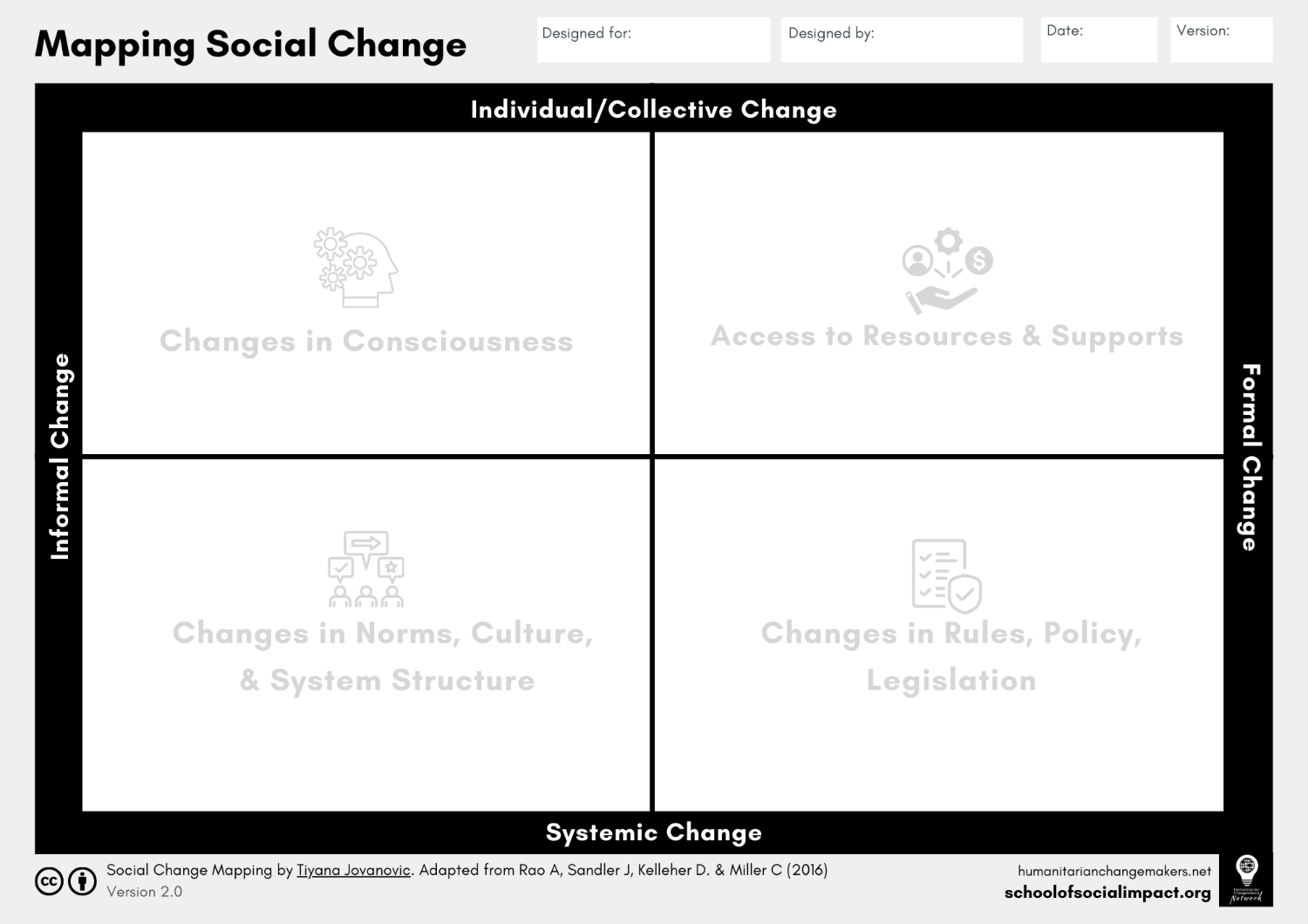
Exercise Walkthrough
Examples

Domestic Violence
This example maps out different changes we would expect to see if the issue of domestic violence was being properly addressed.

LGBTQIA+ Inclusion in Catholic Schools
This example maps out potential changes we could see if we were to make catholic schools more inclusive of LGBTQIA+ students
Part 1
Informal, Individual/Collective Change
Quadrant 1: Informal Individual/Collective Change
Start by reflecting on the changes related to our collective consciousness. Think about the shifts in awareness, attitudes, and understanding you wish to inspire in individuals and communities. Consider questions like:
- What beliefs or values do you want to see evolve?
- How can you contribute to a more informed and empathetic society?
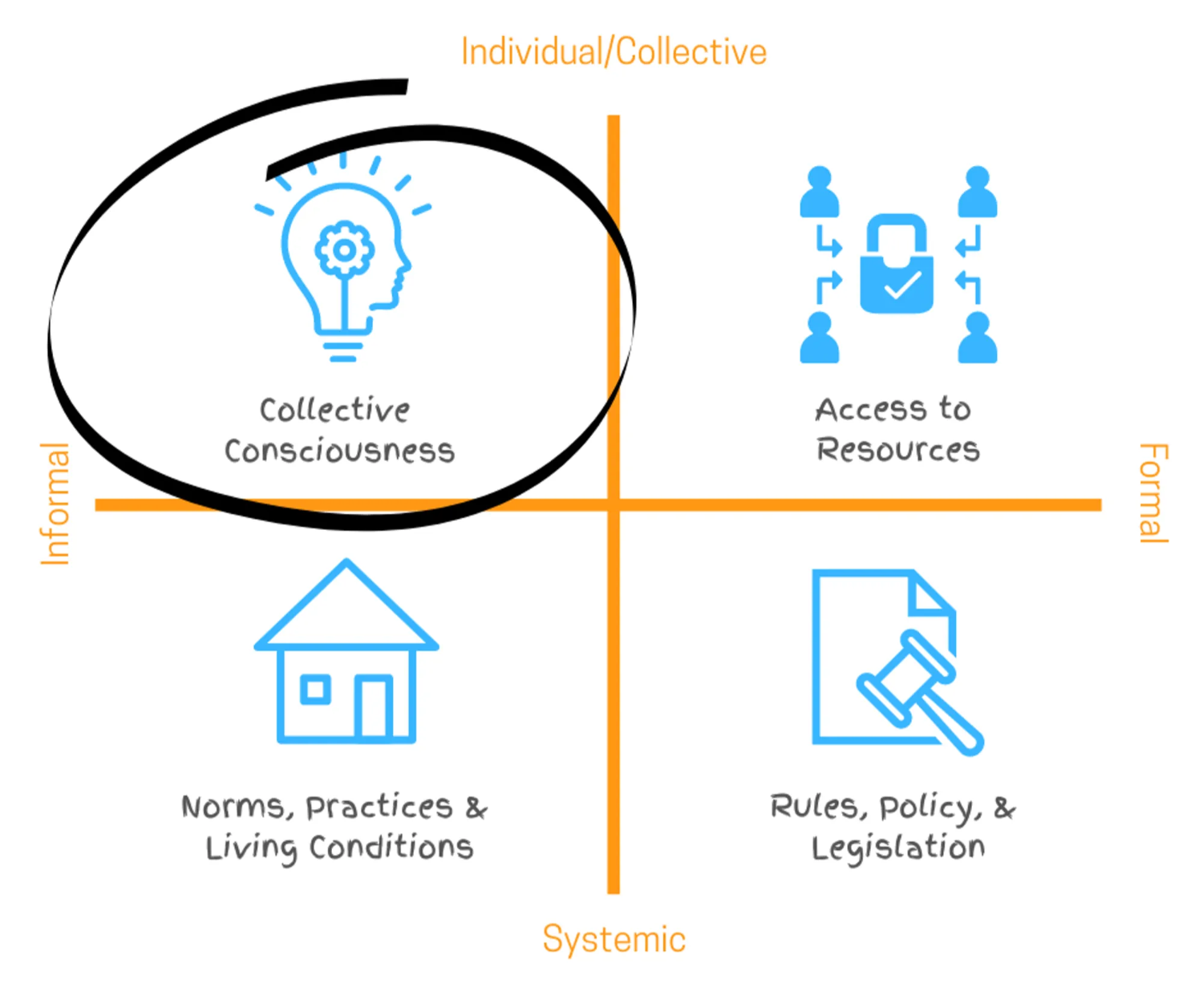
Part 2
Formal, Individual/Collective Change
Quadrant 2: Formal Individual/Collective Change
Next, focus on changes related to resources and supports. Identify the tangible, quantifiable changes needed to empower individuals and communities. Ask yourself:
- What resources or support systems are lacking?
- How can access to these resources be improved or expanded?
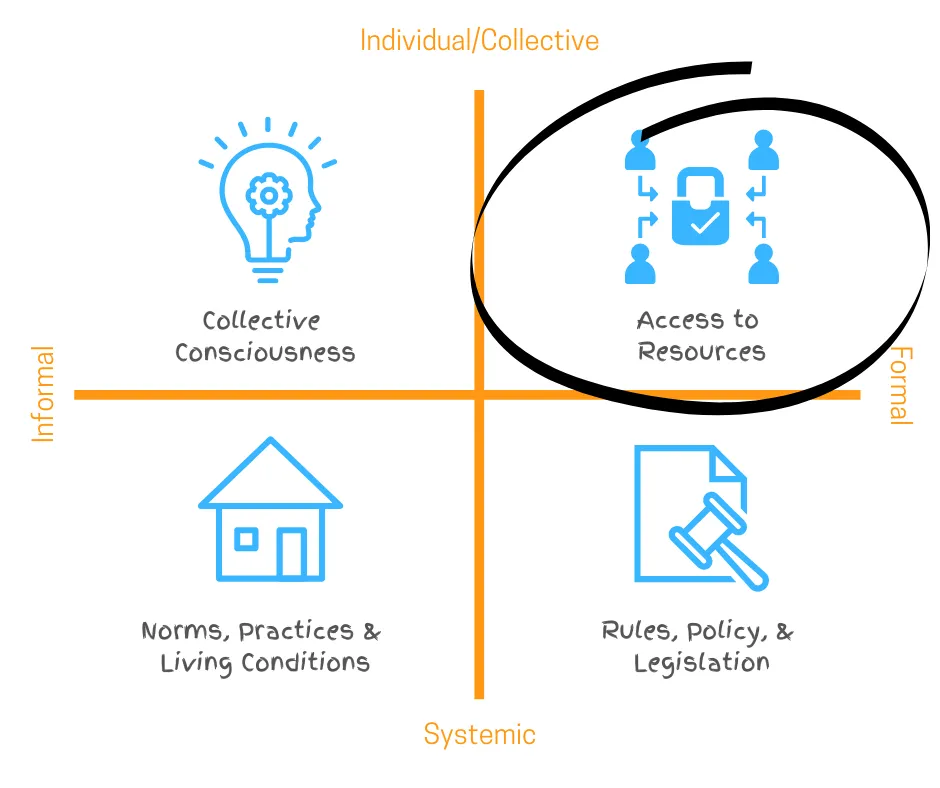
Part 3
Formal, Systemic Change
Quadrant 3: Formal Systemic Change
Now, examine changes related to legislation, policy, and the formal structures that shape 'business as usual'. Consider the systemic shifts necessary to address root causes of issues:
- What policies need to be reformed or introduced?
- How can existing structures be reshaped to promote equity and justice?
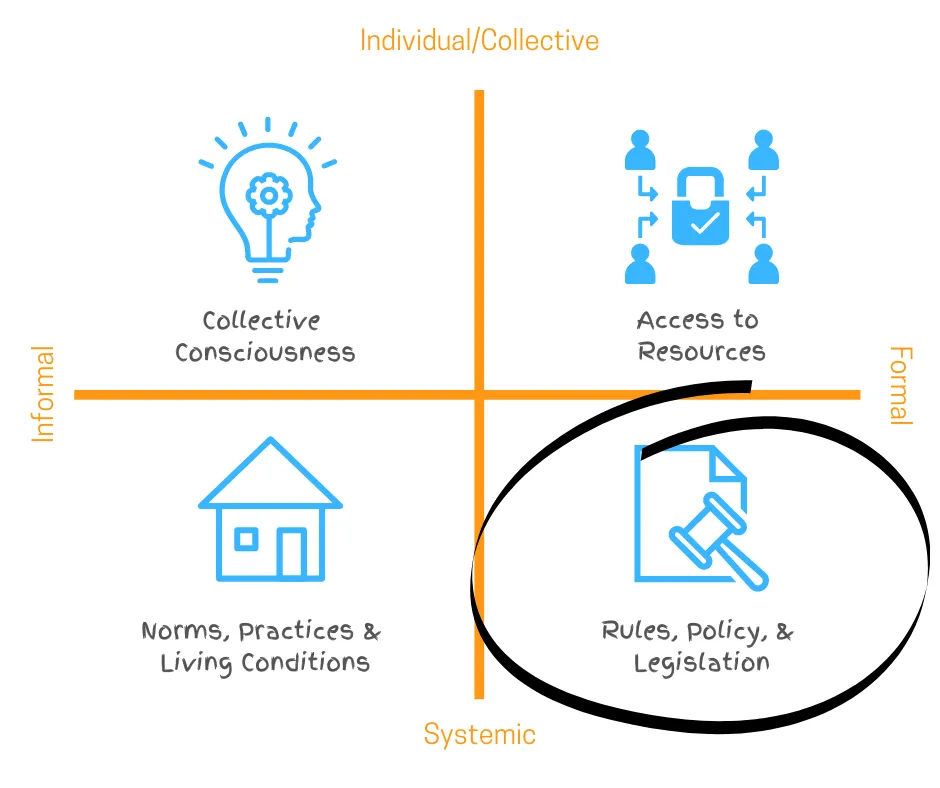
Part 4
Informal, Systemic Change
Quadrant 4: Informal Systemic Change
Finally, think about changes related to norms, practices, and conditions within various societal systems. Reflect on the cultural and social shifts required to support systemic change:
- What societal norms need to be challenged or transformed?
- How can practices within institutions be aligned with ethical and sustainable values?
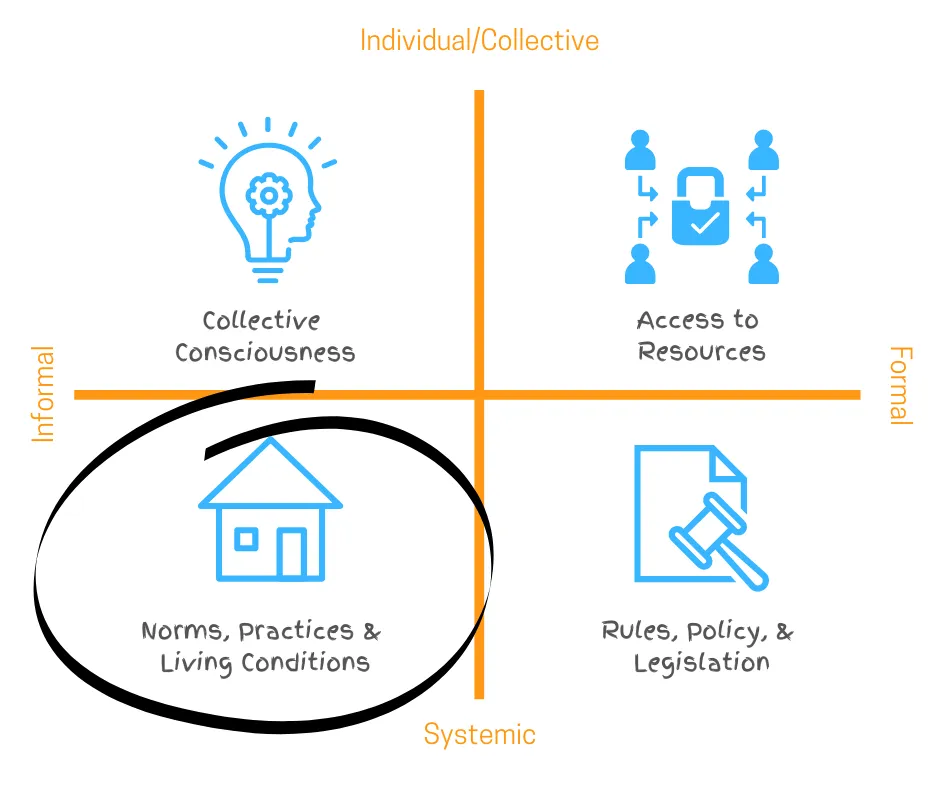
Let's make your vision a reality!
Now that you've crafted your vision using the Social Change Mapping framework, it's time to turn that vision into a plan for action, by crafting your own Impact Blueprint to guide you on your changemaking journey and help you implement these changes.